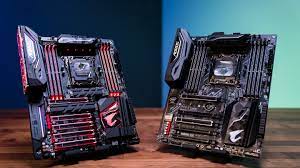A motherboard is a computer device that is used to develop communication among the other components. The board has connectors that connect different parts with the PC such as CPU, hard drive, USD, GPU, etc. Without a MOBO, you can’t run the PC that shows the importance of motherboard in building a PC. Therefore, PC enthusiasts should give it the value that they provide to the CPU.
By CPU, I need to mention that the compatibility between motherboard and CPU is essential. The motherboard comes with a specific socket such as LGA 1151, LGA 1200 and AM4+, etc. Each of them is suitable for a processor of a particular generation. The LGA 1151 supports the 9th Intel generation, whereas the 1200 Intel supports the 10th & 11th generation, and AM4+ supports Ryzen latest processors. I know things are not that easy to understand, don’t worry, I prepared a guide where you learn how to pick a motherboard for you. Below are mentioned some factors by Gaming Silk that help you in choosing a suitable MOBO, let’s check.
Important Factors to Note Down Before Picking a Motherboard
Chipset
Before selecting a mobo, it is essential to figure out the chipset of a motherboard. The chipset is an equipped silicon chip on the MOBO. This chip is compatible with a particular type of processor generation.
It arises from the connection between attached devices and the CPU. It is like a hub that handles the different buses on the board, such as storage devices, external ports, PCIe lanes, and other peripherals. A high-quality chipset can offer more ports and slots than ordinary ones.
Form Factor
The other significant factor that we need to consider while picking a motherboard is the form factor. The form factor is the size of the motherboard. There are different sizes of motherboard named ATX, MICRO-ATX, MINI-ITX, and E-ATX.
Now how will you decide what size you better go with? Listen, you can check the available size of MOBO on the PC. If you are still confused, measure the old motherboard size and shape to make a new one according to the exact figure. The ATX (12″) is the standard form used by users often. However, the Micro-ATX ( 2″ short than ATX) and Mini-ITX ( 6.75″) are the small form factor while the E-ATX is a larger one. The boards with small form factors have fewer ports and other features as compared to others.
RAM:
RAM is that section of the motherboard which affects the performance and usability of the computer. With a good amount of RAM, you can use a PC without any lagging and freezing issues. Thereby, make sure for a light workload there would be 8GB RAM. On the contrary, for high-end gaming and video editing, RAM must be at least 16GB and so on.
Overclocking:
Overclocking or clock speed is the one feature of the motherboard that decides how much longer you can use the computer. A board with a high clock speed can run for a long time without throttling and bottlenecks. Some motherboards give you 5GHz overclocking capability, but if you want to go with regular, go with more than 3GHz.
PCIe Expansion Slots
The more PCIe slots your board offers, the more connectivity options you will get. Suppose, if you want to add graphics cards, sound, or other cards, you can add them in the PCIe expansion slot.
USB Ports
Nowadays, USB ports are coming with different types and generations. However, the motherboard with USB 3.2 Gen 2 Type-C is the latest connection. Also, the other ports like USB 3.1 Gen 1 and USB 2.0 are equipped in the motherboard depending on the panel’s space.
Conclusion:
The essential factors described above are the need to have a compatible motherboard. So, examine these points before picking a MOBO if you don’t want to compromise PC performance. Apart from these, you should also check GPU, WIFI, SATA, and Cache memory support on the board. Once you check all these things, you are all set to build your Ideal PC.
